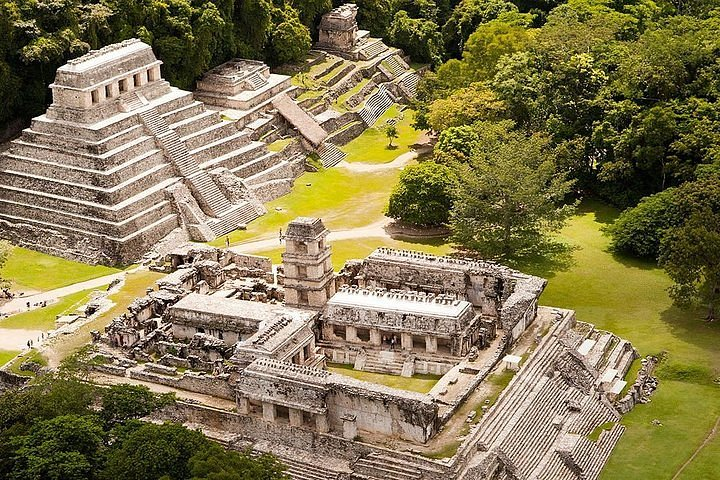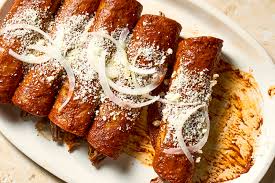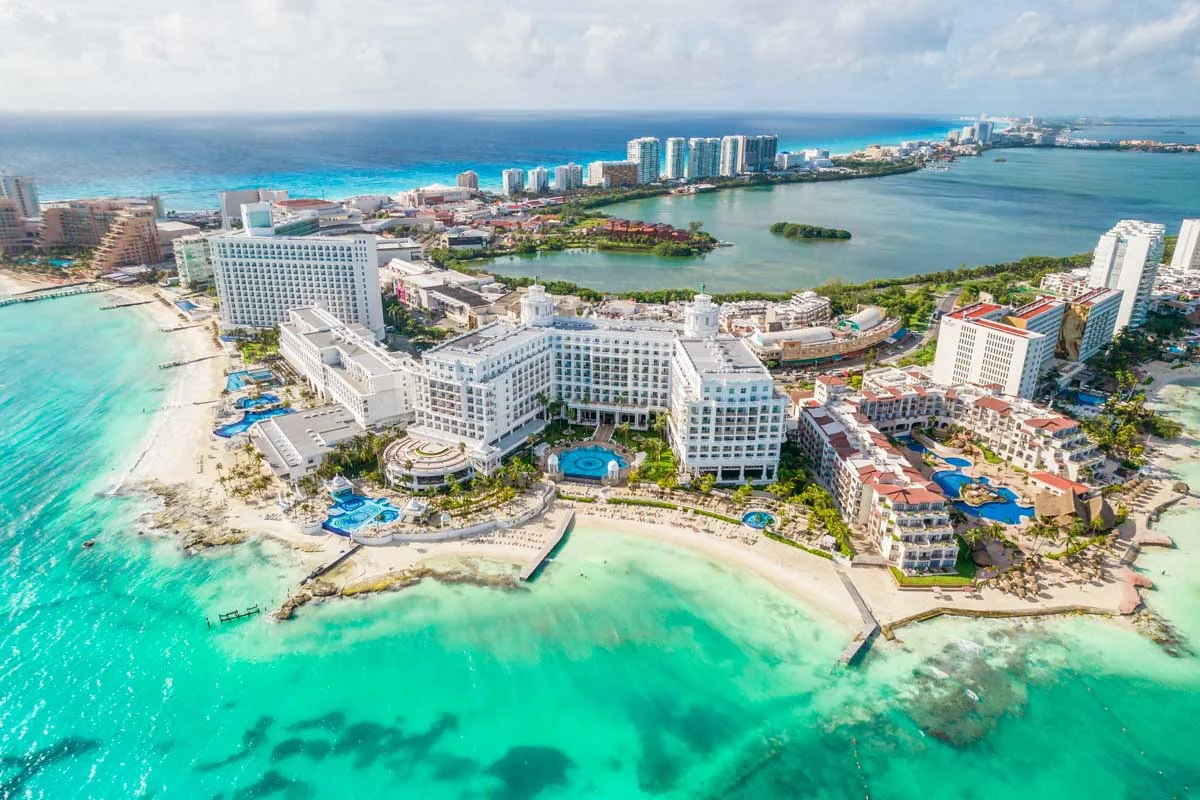Mexico, known for its rich history, vibrant culture, and breathtaking landscapes, is a country that enchants visitors with its diverse offerings. From ancient ruins and colonial cities to stunning beaches and bustling metropolises, Mexico is a land of contrasts and beauty.
The country’s deep-rooted traditions, flavorful cuisine, and warm hospitality make it a must-visit destination for travelers seeking both adventure and relaxation. Whether exploring the remnants of ancient civilizations or enjoying the modern comforts of its urban centers, Mexico is a country that offers something for everyone.
Table of Contents
Geography
Mexico is a vast country, covering approximately 1.96 million square kilometers, making it the 14th largest country in the world by land area. Located in the southern part of North America, it is bordered to the north by the United States, to the south and west by the Pacific Ocean, to the southeast by Guatemala, Belize, and the Caribbean Sea, and to the east by the Gulf of Mexico. Mexico’s geography is incredibly diverse, ranging from arid deserts and lush rainforests to high mountain ranges and extensive coastlines.
The country is divided into 31 states and one federal district, Mexico City, which serves as the capital. The Sierra Madre mountain ranges, which run parallel to both coasts, dominate the landscape, creating dramatic scenery and influencing the climate in various regions. Mexico is also home to several active volcanoes, including Popocatépetl and Colima, which add to the country’s unique geographical features.
The Yucatán Peninsula, known for its tropical climate and ancient Mayan ruins, contrasts sharply with the arid regions of the north, highlighting the country’s geographical diversity. The coastal areas of Mexico, particularly along the Caribbean and Pacific coasts, are renowned for their stunning beaches and marine life. The Baja California Peninsula, with its rugged terrain and beautiful coastline, is a popular destination for tourists seeking outdoor adventures.
The country’s varied topography also includes expansive deserts like the Sonoran Desert and fertile valleys such as the Valley of Mexico, where the capital is located. This diversity in geography contributes to Mexico’s rich biodiversity and offers a wide range of experiences for visitors.
States of Mexico
Mexico is divided into 32 federal entities, which include 31 states and one capital city, Mexico City. Here is a table listing all 31 states of Mexico along with their capitals, plus the capital city:
| # | State | Capital |
|---|---|---|
| 1 | Aguascalientes | Aguascalientes |
| 2 | Baja California | Mexicali |
| 3 | Baja California Sur | La Paz |
| 4 | Campeche | Campeche |
| 5 | Chiapas | Tuxtla Gutiérrez |
| 6 | Chihuahua | Chihuahua |
| 7 | Coahuila | Saltillo |
| 8 | Colima | Colima |
| 9 | Durango | Durango |
| 10 | Guanajuato | Guanajuato |
| 11 | Guerrero | Chilpancingo |
| 12 | Hidalgo | Pachuca |
| 13 | Jalisco | Guadalajara |
| 14 | Mexico | Toluca |
| 15 | Mexico City | Mexico City |
| 16 | Michoacán | Morelia |
| 17 | Morelos | Cuernavaca |
| 18 | Nayarit | Tepic |
| 19 | Nuevo León | Monterrey |
| 20 | Oaxaca | Oaxaca |
| 21 | Puebla | Puebla |
| 22 | Querétaro | Querétaro |
| 23 | Quintana Roo | Chetumal |
| 24 | San Luis Potosí | San Luis Potosí |
| 25 | Sinaloa | Culiacán |
| 26 | Sonora | Hermosillo |
| 27 | Tabasco | Villahermosa |
| 28 | Tamaulipas | Ciudad Victoria |
| 29 | Tlaxcala | Tlaxcala |
| 30 | Veracruz | Xalapa |
| 31 | Yucatán | Mérida |
| 32 | Zacatecas | Zacatecas |
History
The history of Mexico is a rich tapestry that spans thousands of years, beginning with the ancient civilizations that once thrived in the region. The Olmecs, considered the “mother culture” of Mesoamerica, were among the first major civilizations in Mexico, leaving behind impressive artifacts such as colossal stone heads. Following the Olmecs, the Mayans and Aztecs emerged as dominant powers, each contributing to the cultural and architectural heritage of the region.
The Mayans are renowned for their advanced knowledge of astronomy and mathematics, as well as their iconic pyramids found in places like Chichen Itza and Tulum. The Aztecs, who built the grand city of Tenochtitlán on the site of modern-day Mexico City, are remembered for their military prowess and complex social structures. In the early 16th century, the Spanish conquest, led by Hernán Cortés, marked a significant turning point in Mexican history.
The fall of the Aztec Empire in 1521 and the subsequent colonization by Spain brought profound changes to the region. The introduction of Christianity, European languages, and new agricultural practices reshaped the social and cultural landscape. The colonial period saw the construction of beautiful cities such as Mexico City, Puebla, and Guanajuato, which combined indigenous and European architectural styles.
This era also gave rise to a complex caste system and the exploitation of indigenous populations, leading to significant social and economic disparities. Mexico’s struggle for independence began in the early 19th century, inspired by the broader movements for freedom sweeping across Latin America. The war for independence, led by figures such as Miguel Hidalgo and José María Morelos, culminated in Mexico’s independence from Spain in 1821.
The subsequent years were marked by political instability, foreign interventions, and internal conflicts, including the Mexican-American War and the French intervention in Mexico. The 20th century brought significant social and political changes, particularly with the Mexican Revolution, which aimed to address social injustices and redistribute land. Today, Mexico is a vibrant democracy with a rich cultural heritage, celebrating its indigenous roots while embracing modernity.
Top Ten Must-Visit Destinations
1. Chichen Itza

Chichen Itza, located in the Yucatán Peninsula, is one of the most famous archaeological sites in Mexico. This ancient Mayan city is home to the iconic pyramid of El Castillo, a testament to the advanced astronomical knowledge of the Mayans. Visitors can explore the Temple of the Warriors, the Great Ball Court, and other impressive structures that showcase the architectural and cultural achievements of the Mayan civilization.
2. Mexico City

Mexico City, the bustling capital of Mexico, is a vibrant metropolis that blends modernity with rich history. Key attractions include the Zócalo, the city’s main square surrounded by historic buildings, and the National Museum of Anthropology, which houses an extensive collection of artifacts from Mexico’s pre-Columbian heritage. Visitors can also explore the ancient ruins of Templo Mayor, the vibrant neighborhoods of Coyoacán and Roma, and the famous floating gardens of Xochimilco.
3. Tulum

Tulum, located on the Caribbean coast of the Yucatán Peninsula, is a stunning destination known for its well-preserved Mayan ruins overlooking the turquoise waters of the Caribbean Sea. The Tulum ruins offer a glimpse into the ancient Mayan world, with structures like the Temple of the Frescoes and El Castillo. The nearby beaches and cenotes (natural sinkholes) add to the allure, making Tulum a popular destination for both history enthusiasts and beach lovers.
4. Palenque

Palenque, an ancient Mayan city in the state of Chiapas, is renowned for its intricate carvings and stunning jungle setting. The Temple of the Inscriptions, the Palace, and other structures at Palenque provide insight into the Mayan civilization’s architectural and artistic achievements. The site is surrounded by dense rainforest, adding to its mystical atmosphere and making it a favorite among travelers seeking both history and nature.
5. Teotihuacan

Teotihuacan, located near Mexico City, is one of the most significant archaeological sites in the world. Known as the “City of the Gods,” Teotihuacan features massive pyramids, including the Pyramid of the Sun and the Pyramid of the Moon. Visitors can walk along the Avenue of the Dead and explore the various temples and residential complexes that once made up this powerful ancient city. The site’s scale and mystery continue to captivate visitors from around the world.
6. Cancun

Cancun, situated on the northeastern coast of the Yucatán Peninsula, is one of Mexico’s most popular tourist destinations. Known for its stunning beaches, vibrant nightlife, and luxurious resorts, Cancun attracts millions of visitors each year. The nearby Mayan ruins of El Rey and the underwater museum of art, MUSA, offer cultural experiences, while the surrounding natural beauty provides ample opportunities for snorkeling, diving, and exploring cenotes.
7. Guadalajara

Guadalajara, the capital of the state of Jalisco, is known for its rich cultural heritage and as the birthplace of mariachi music and tequila. The city’s historic center features beautiful colonial architecture, including the Guadalajara Cathedral and Teatro Degollado. Visitors can also explore the nearby town of Tequila, where they can learn about the production of Mexico’s most famous spirit and enjoy tastings at local distilleries.
8. Oaxaca

Oaxaca, located in southern Mexico, is a cultural gem known for its vibrant arts scene, indigenous traditions, and culinary delights. The city’s historic center is a UNESCO World Heritage site, featuring beautiful colonial architecture and lively markets. Visitors can explore the ancient Zapotec ruins of Monte Albán, sample traditional Oaxacan cuisine, and participate in the city’s numerous festivals, including the famous Day of the Dead celebrations.
9. Copper Canyon

Copper Canyon, located in the state of Chihuahua, is a series of vast canyons larger and deeper than the Grand Canyon. The region is known for its rugged beauty and offers a variety of outdoor activities, including hiking, horseback riding, and train rides on the famous Chihuahua al Pacífico Railway. The indigenous Tarahumara people, known for their long-distance running abilities, inhabit the region and offer visitors a glimpse into their traditional way of life.
10. Playa del Carmen

Playa del Carmen, located on the Riviera Maya, is a vibrant beach town known for its relaxed atmosphere and beautiful beaches. The town’s Quinta Avenida is lined with shops, restaurants, and bars, offering plenty of entertainment options. Nearby attractions include the eco-archaeological park Xcaret, where visitors can explore underground rivers, and the ancient Mayan ruins of Coba, accessible through lush jungle paths.
Culture
Mexico’s culture is a vibrant blend of indigenous traditions, Spanish colonial influences, and modern innovations. The country is home to a rich tapestry of languages, with Spanish being the official language, while numerous indigenous languages, such as Nahuatl, Maya, and Mixtec, are spoken by millions across the country. Mexico’s cultural diversity is celebrated through its festivals, music, dance, and cuisine, making it a country where traditions are cherished and innovation is embraced.
Mexican traditions are deeply rooted in family, religion, and community. Celebrations such as Día de los Muertos (Day of the Dead) and Las Posadas are significant cultural events that reflect the country’s unique blend of indigenous and Catholic traditions. Mexican cuisine, known for its bold flavors and use of fresh ingredients, is a key aspect of the country’s cultural identity.
Dishes such as tacos, tamales, and mole are enjoyed across the country and have gained international recognition. Music and dance are also integral to Mexican culture, with mariachi, banda, and regional folk dances playing a central role in celebrations and social gatherings.
Festivals
Mexico is a country rich in festivals, each reflecting the country’s diverse cultural heritage and deep-rooted traditions. One of the most famous festivals is Día de los Muertos (Day of the Dead), celebrated from October 31st to November 2nd. This festival honors deceased loved ones and is marked by colorful altars, offerings of food and flowers, and vibrant parades.
The Day of the Dead is a UNESCO-recognized cultural tradition and is celebrated with great fervor throughout Mexico, particularly in regions like Oaxaca and Michoacán. Another significant festival is the Guelaguetza, held in Oaxaca in July. This indigenous cultural festival showcases the diverse traditions of the Oaxacan region, with performances of traditional dances, music, and colorful costumes.
The Guelaguetza is a celebration of community and cooperation, reflecting the indigenous values of sharing and reciprocity. Other notable festivals in Mexico include Semana Santa (Holy Week), celebrated with religious processions and ceremonies, and Independence Day on September 16th, marked by patriotic festivities across the country.
Economy
Mexico has a diverse and growing economy, driven by a mix of traditional industries and modern sectors. The country’s economy is one of the largest in Latin America and is classified as an upper-middle-income country by the World Bank. Mexico is a major producer of oil, silver, and other minerals, with these industries playing a significant role in the country’s economic development.
The manufacturing sector, particularly the automotive industry, is also a key driver of economic growth, with Mexico being one of the world’s largest exporters of vehicles. In recent years, the service sector has become increasingly important, with tourism, finance, and telecommunications contributing significantly to the economy. Mexico’s tourism industry is a major source of revenue, attracting millions of visitors each year to its beaches, cultural sites, and natural attractions.
The country’s strategic location and trade agreements, such as the United States-Mexico-Canada Agreement (USMCA), have also facilitated economic growth and integration into the global economy. Despite these strengths, Mexico faces challenges such as income inequality, poverty, and issues related to crime and corruption.
Top Eight Most Famous Food








Ten Interesting Facts About Mexico
- Mexico is home to 34 UNESCO World Heritage Sites, reflecting its rich cultural and natural heritage.
- The world’s smallest volcano, Cuexcomate, is located in Puebla, Mexico, standing at just 13 meters tall.
- The Country introduced chocolate, chili, and corn to the world, all of which are integral to its cuisine.
- The ancient city of Teotihuacan was once one of the largest cities in the world, with a population of over 100,000.
- Mexico City is sinking at a rate of about 10 centimeters per year due to the depletion of the aquifer beneath the city.
- The Mexican flag is full of symbolism, with the eagle and snake representing the ancient Aztec legend of the founding of Tenochtitlán.
- The Country is the birthplace of mariachi music, a genre that is now recognized as a UNESCO Intangible Cultural Heritage.
- The Monarch Butterfly Biosphere Reserve in Mexico is a vital overwintering site for millions of monarch butterflies.
- The Country is the largest Spanish-speaking country in the world, with over 120 million native speakers.
- The world’s oldest university in North America, the National Autonomous University of Mexico (UNAM), was founded in 1551.
Conclusion
Mexico is a country of incredible diversity, where ancient traditions coexist with modernity, and natural beauty meets cultural richness. From the ancient ruins of civilizations past to the vibrant cities and stunning landscapes, The Country offers a unique and unforgettable experience for all who visit. The country’s deep-rooted culture, warm hospitality, and rich history make it a destination that captivates the heart and soul. Whether exploring its historic sites, enjoying its world-renowned cuisine, or immersing oneself in its colorful festivals, The Country is a land of enchantment that leaves a lasting impression on all who journey there.

